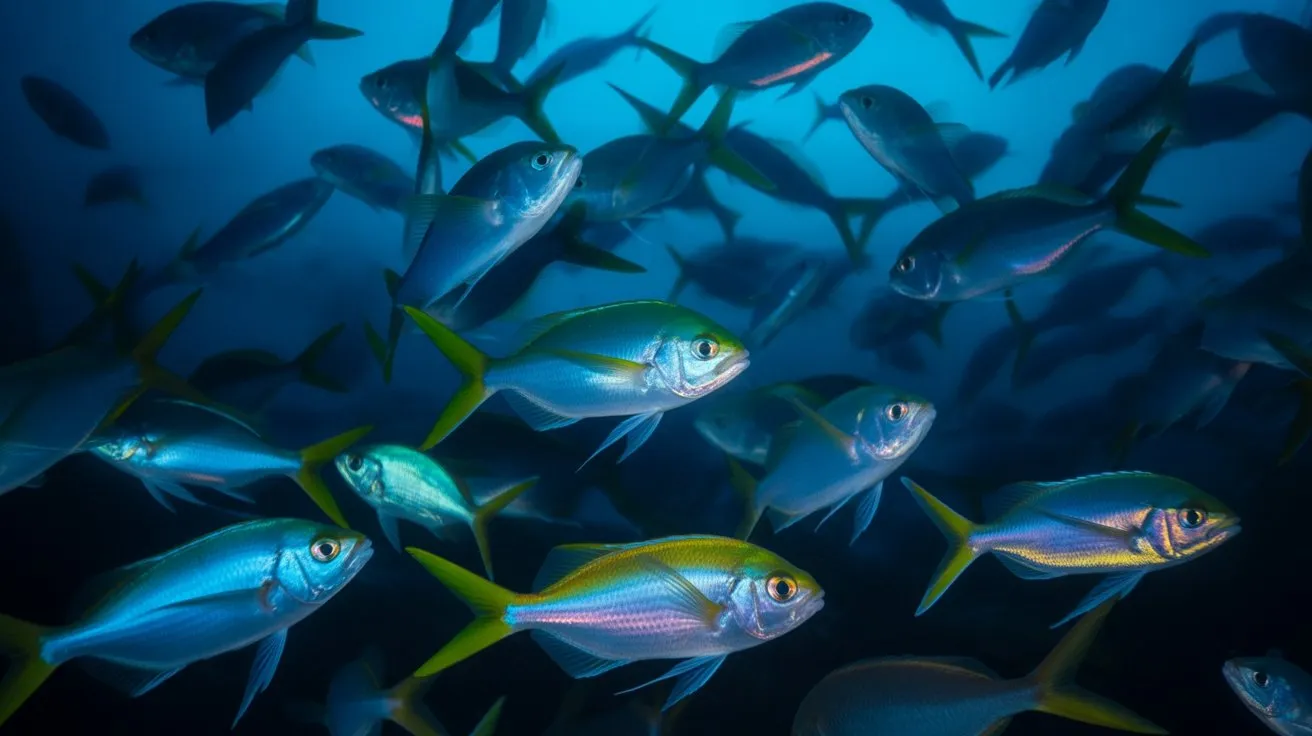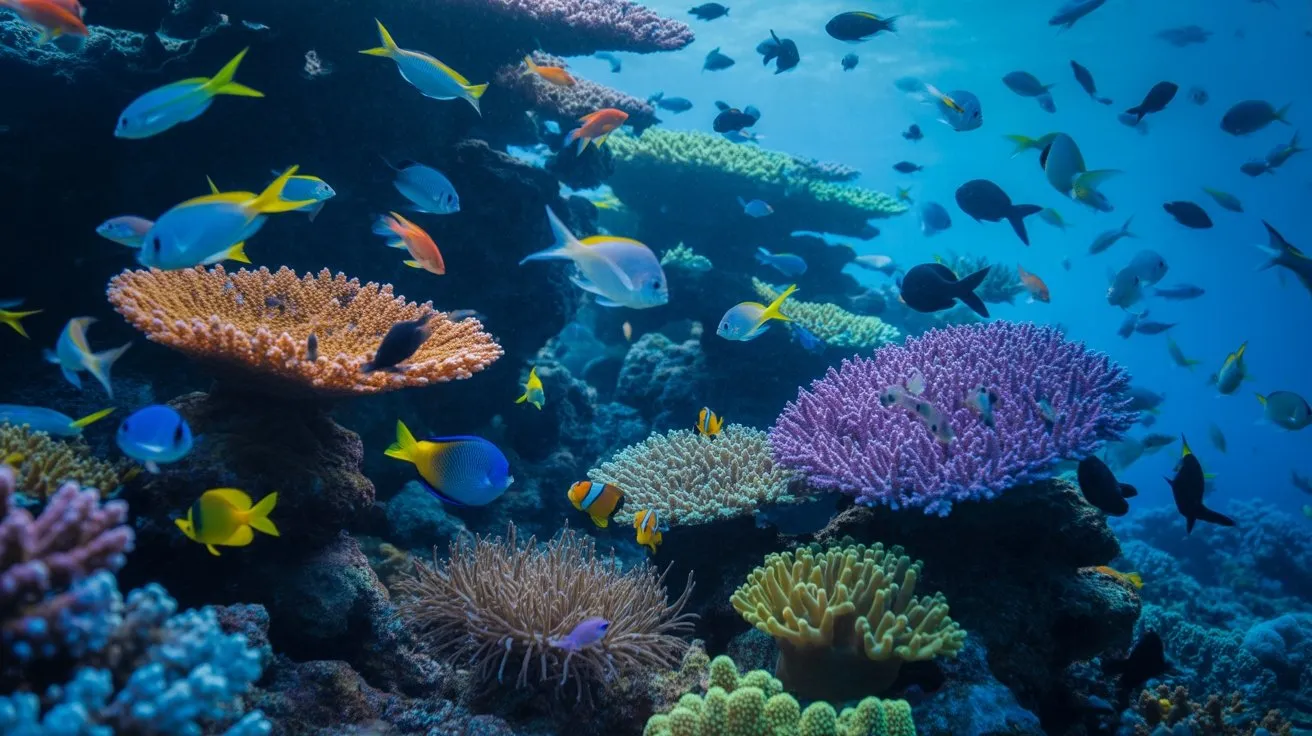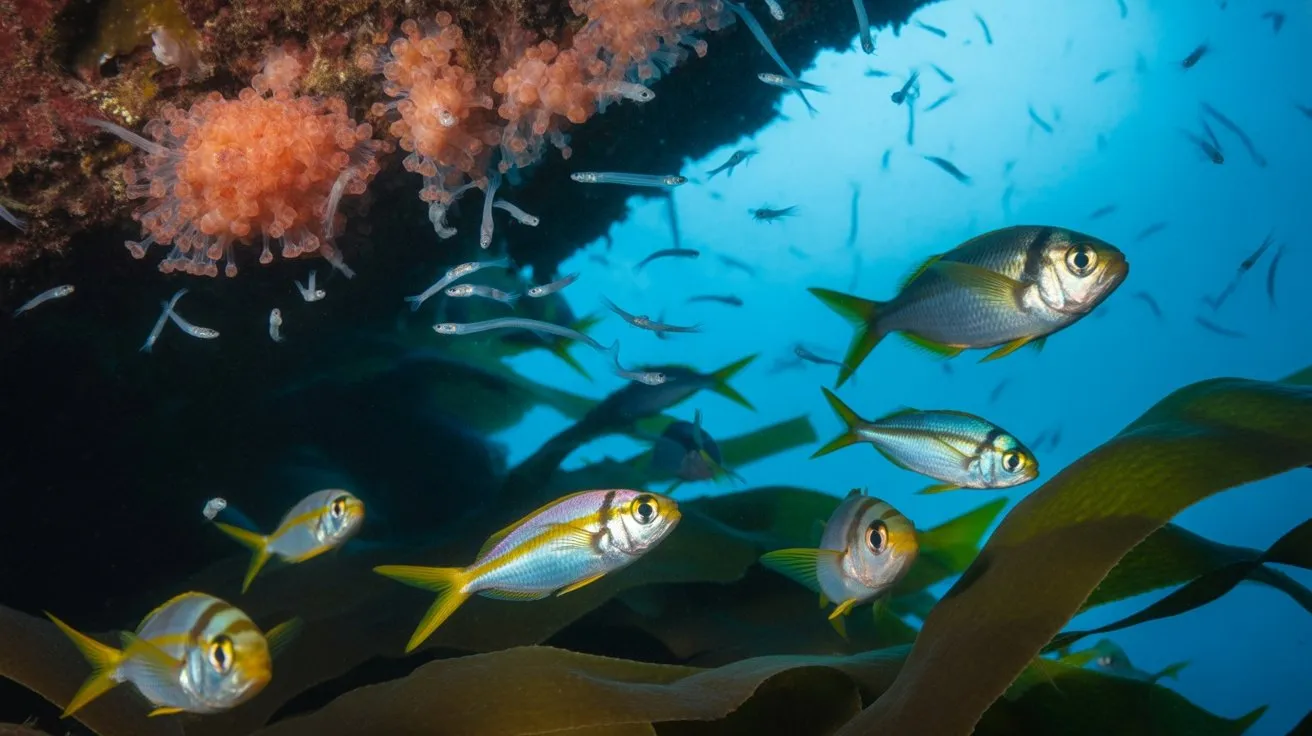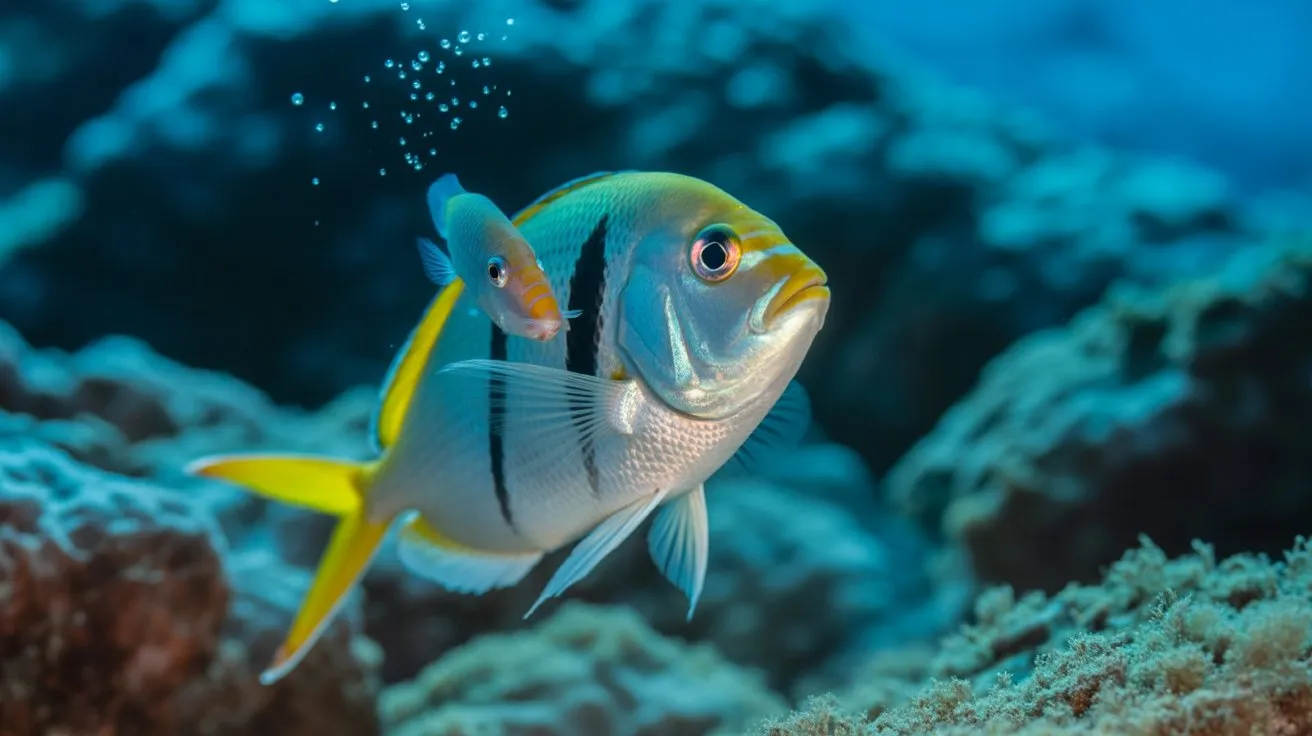You might be surprised to learn that over 80% of deep-sea organisms exhibit bioluminescence, yet scientists have barely scratched the surface of understanding their complex light-producing mechanisms. When you examine these creatures’ luciferin-luciferase reactions and photophore structures, you’ll discover sophisticated biochemical processes that’ve evolved over millions of years. However, recent oceanographic research suggests these bioluminescent populations are experiencing unprecedented changes that could fundamentally alter marine ecosystems.
The Science Behind Bioluminescence in Marine Life
When deep-sea fish produce their own light, they’re utilizing a complex biochemical process called bioluminescence that involves the oxidation of luciferin molecules by the enzyme luciferase.
You’ll find this reaction occurs within specialized cells called photocytes, which contain photophores—light-producing organs. The chemical reaction releases energy in the form of photons, creating visible light without generating heat.
If you examine the molecular mechanism, you’ll discover that ATP provides the energy required for luciferin oxidation.
Different species employ distinct luciferin compounds, resulting in varied light colors ranging from blue-green to red wavelengths. The reaction’s efficiency reaches nearly 100%, making it remarkably more effective than artificial light sources.
This biochemical pathway has evolved independently multiple times across marine taxa, demonstrating convergent evolution in deep-ocean environments.
Anglerfish: Masters of Deep-Sea Deception
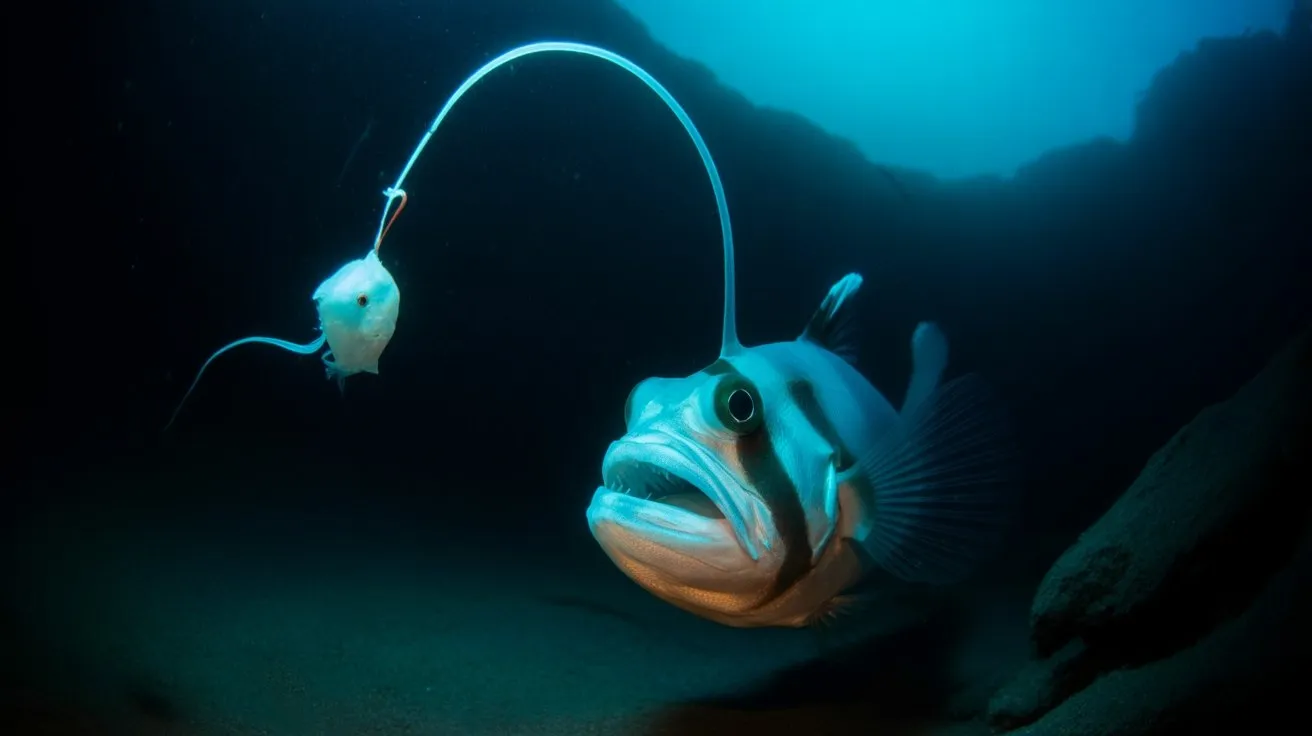
Among the ocean’s most sophisticated predators, anglerfish have evolved an extraordinary hunting mechanism that transforms their bioluminescent capabilities into a deadly lure.
You’ll find these deep-sea specialists utilizing a specialized dorsal fin ray called an illicium, which houses symbiotic bacteria producing blue-green bioluminescence at depths exceeding 1,000 meters.
Their deceptive strategy exploits prey’s natural attraction to light in aphotic zones where photosynthesis can’t occur. The esca (luminous bulb) contains Photobacterium and Vibrio species that generate luciferase-catalyzed reactions.
Key adaptations include:
- Sexually dimorphic parasitism – microscopic males fuse permanently to females
- Expandable stomachs – accommodate prey larger than their body size
- Forward-facing photophores – create ideal light projection angles
- Pressure-resistant swim bladders – maintain neutral buoyancy at extreme depths
Lanternfish: Living Stars of the Ocean Depths
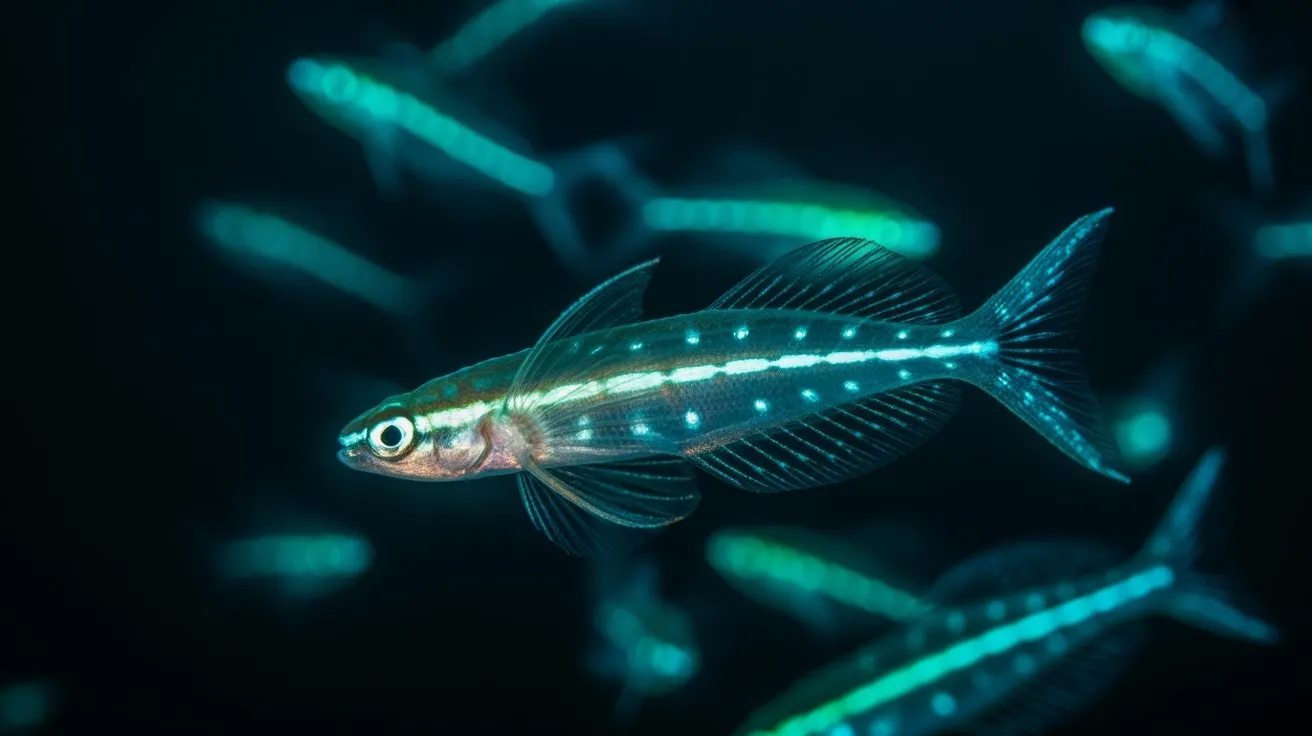
Unlike anglerfish that rely on singular lures, lanternfish (family Myctophidae) transform themselves into dazzling constellation displays through complex arrays of species-specific photophores distributed across their bodies.
You’ll find these mesopelagic swimmers migrating vertically each night, creating the ocean’s largest biomass movement. Their photophores function through luciferin-luciferase reactions, producing blue-green bioluminescence that serves multiple purposes: counterillumination camouflage against predators below, species recognition for mating, and schooling coordination.
When you observe lanternfish patterns, you’re seeing evolutionary masterpieces—each species exhibits unique photophore arrangements that act as biological identification codes.
These living light displays enable precise intraspecific communication while maintaining predator avoidance in the perpetually dark mesopelagic zone.
Flashlight Fish and Their Bacterial Partners
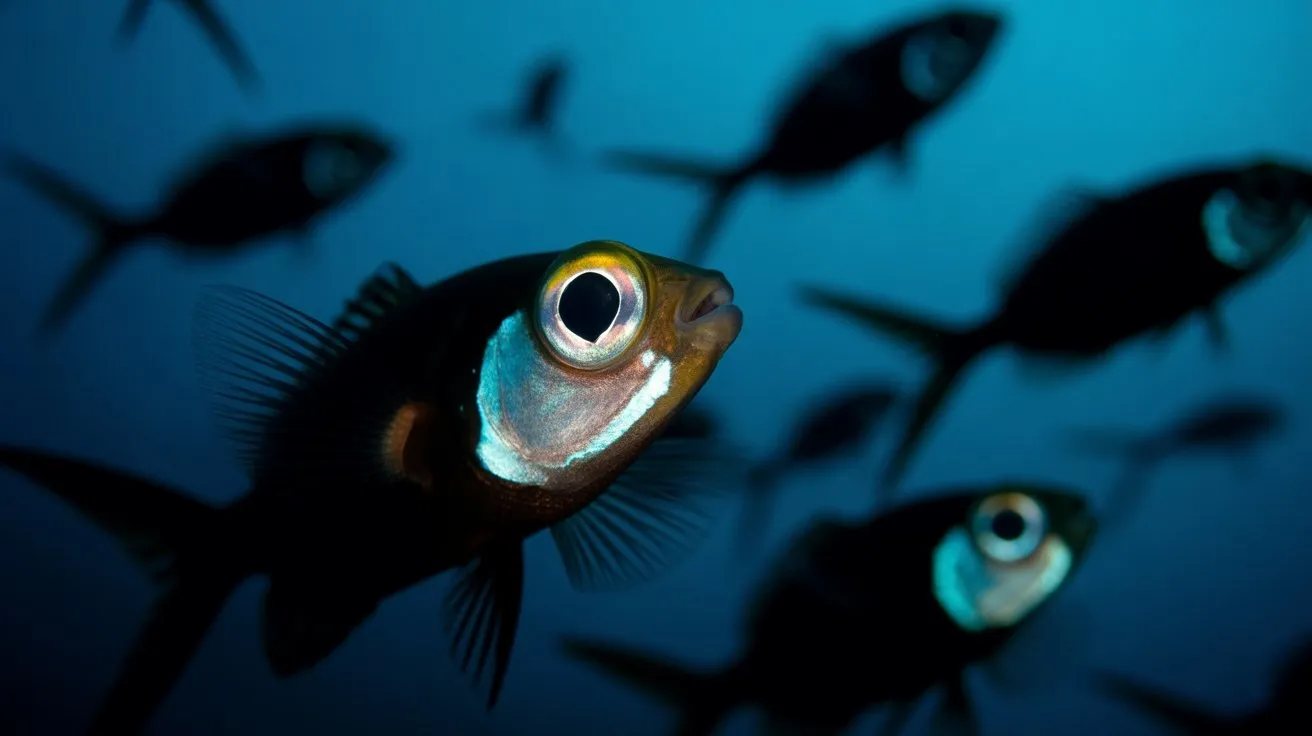
The symbiotic partnership benefits both organisms:
- Bacterial cultivation – Fish provide nutrients, oxygen, and ideal growth conditions within photophores.
- Light regulation – Specialized muscle tissues allow fish to control light emission by covering/uncovering photophores.
- Predator deterrence – Intense flashing patterns confuse potential threats and facilitate escape responses.
- Communication signaling – Species-specific flash sequences enable mate recognition and territorial displays.
This bacterial bioluminescence differs considerably from self-generated light production you’d observe in other marine organisms.
How Glowing Fish Use Light for Survival
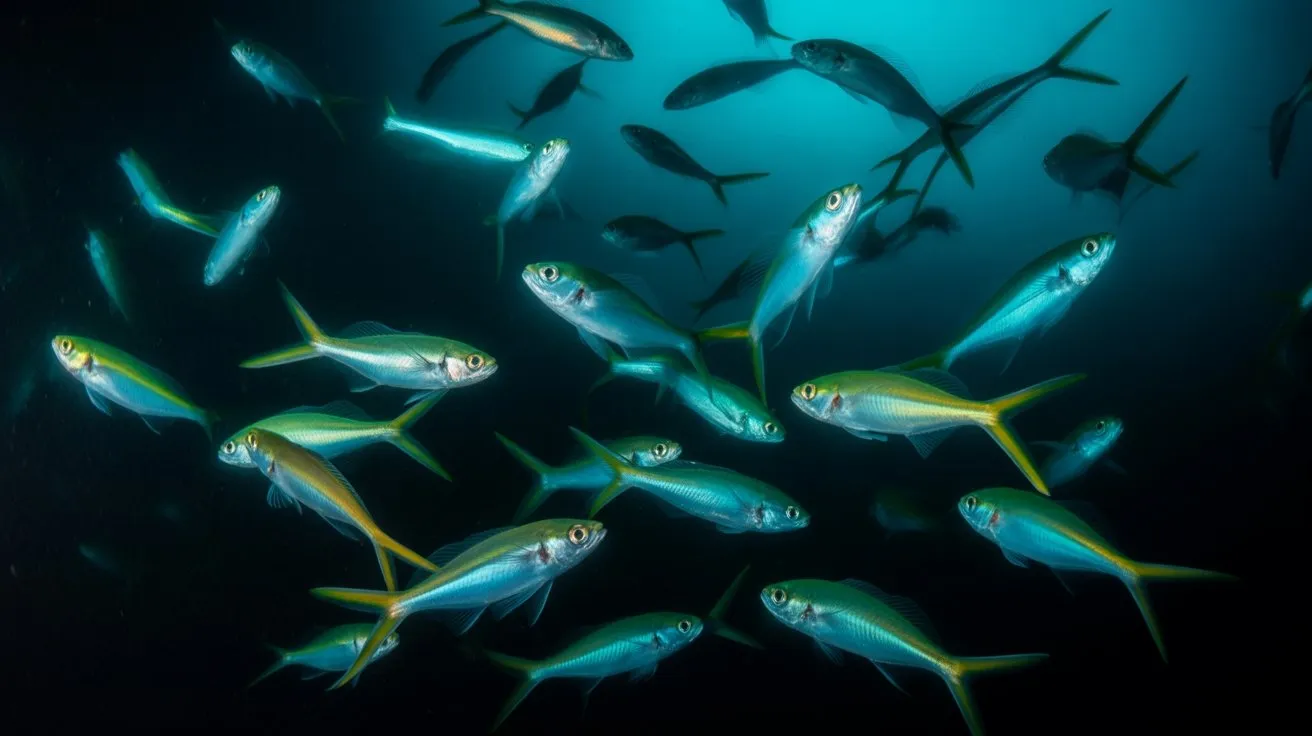
While bioluminescent fish employ light production for various purposes, their primary survival mechanisms center on three critical functions: predator avoidance, prey capture, and intraspecies communication.
You’ll observe predator evasion through counterillumination, where ventral photophores match downwelling sunlight, effectively camouflaging the fish’s silhouette from predators below. This adaptive strategy disrupts the typical dark shadow that would otherwise expose them.
For hunting, you’ll find that predatory species use bioluminescent lures to attract unsuspecting prey. Anglerfish demonstrate this technique by dangling illuminated esca to draw victims within striking range.
Communication occurs through species-specific flash patterns that facilitate mate recognition and territorial displays. These photonic signals enable precise identification among conspecifics in the aphotic zone’s darkness, ensuring reproductive success and social coordination.
Conservation Challenges Facing Bioluminescent Species
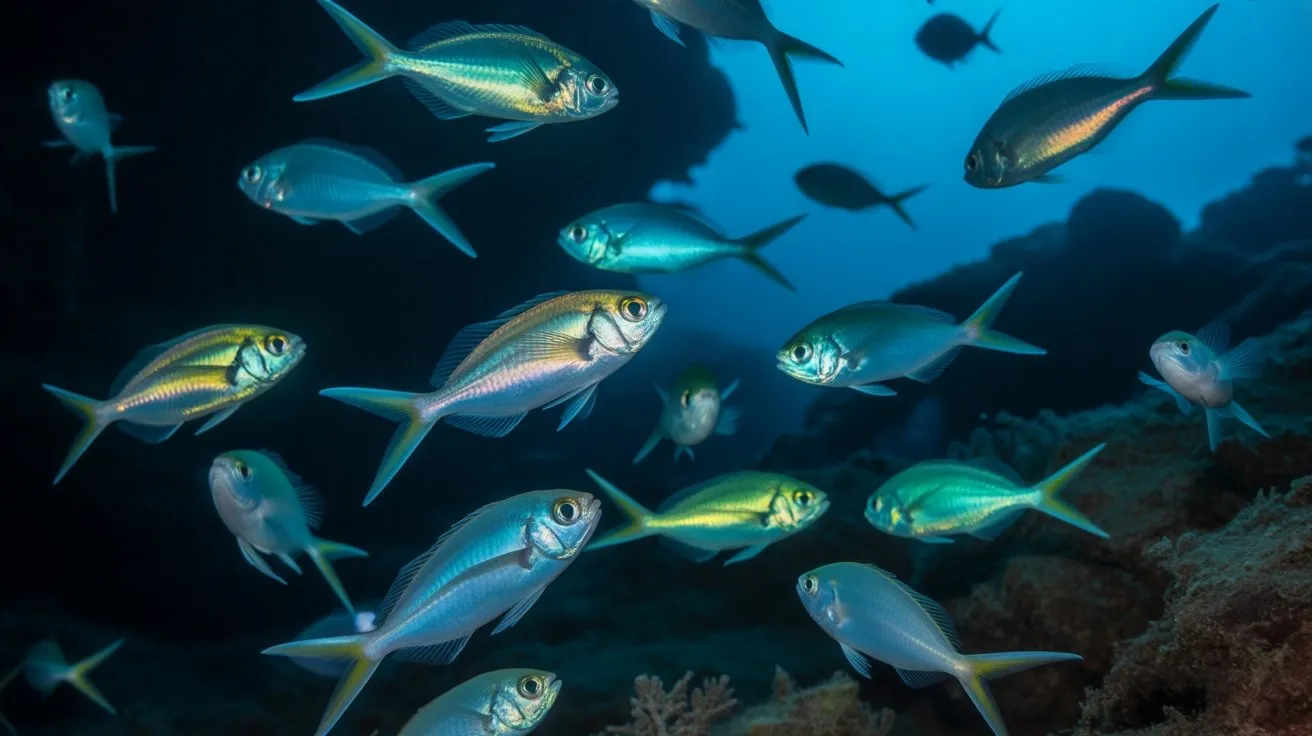
As anthropogenic pressures intensify across marine ecosystems, bioluminescent fish populations face unprecedented conservation threats that jeopardize their evolutionary adaptations and ecological roles.
You’ll find these luminous species confronting multiple stressors that disrupt their specialized photophore systems and deep-sea habitats.
Critical conservation challenges include:
- Ocean acidification – pH reduction compromises luciferin-luciferase biochemistry, diminishing bioluminescent intensity
- Deep-sea mining operations – Sediment plumes destroy benthic communities where many photophoric species feed
- Climate-driven thermal stratification – Altered temperature gradients fragment vertical migration patterns essential for foraging
- Plastic pollution accumulation – Microplastics interfere with prey recognition and disrupt photophore functionality
You’re witnessing irreversible changes as these ancient bioluminescent lineages struggle against rapid environmental degradation, threatening biodiversity loss in Earth’s least-explored ecosystems.
Conclusion
You’ll find that bioluminescent marine organisms function like biological lighthouses in the ocean’s abyssal zones, employing sophisticated luciferin-luciferase enzymatic pathways to generate photonic emissions. As you examine these species’ photophore structures and bacterial symbioses, you’re observing millions of years of evolutionary adaptation. However, you must recognize that anthropogenic factors—including oceanic acidification, thermal stratification, and chemical pollutants—are disrupting these organisms’ biochemical processes. Your understanding of their conservation requirements becomes critical for preserving these remarkable bioluminescent ecosystems.
